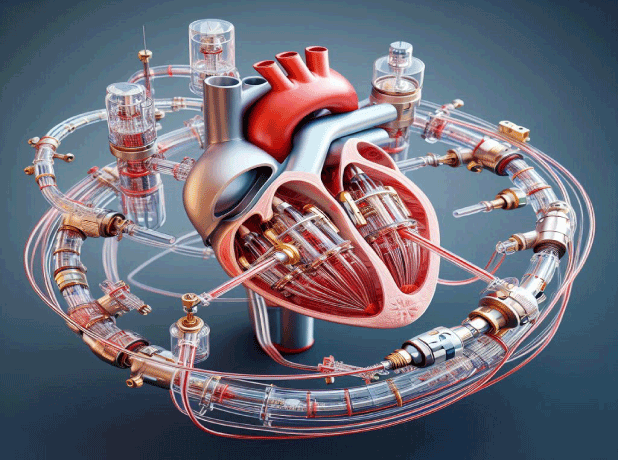
Abstract
Background: Postcardiotomy shock, often necessitates advanced mechanical circulatory support. Veno-arterial extracorporeal membrane oxygenation (VA-ECMO) and the Impella 5.5 device are crucial for hemodynamic stabilization. This study evaluates the efficacy and safety of direct aortic cannulation versus axillary artery surgical cut-down for Impella 5.5 implantation in postcardiotomy shock patients.
Methods: A retrospective analysis was conducted on 24 patients with postcardiotomy shock at the University Hospital of Würzburg from January 2023 to August 2024. Patients were divided into two groups: 12 underwent axillary artery implantation of the Impella 5.5 device, and 12 received the device via direct aortic implantation, including those with central combined use of extracorporeal membrane oxygenation and Impella (ECMELLA) setting. The aim was to assess the comparative efficacy and safety of direct aortic cannulation compared to axillary artery surgical cut-down.
Results: Both techniques effectively stabilized cardiac function, with significant improvements in cardiac output and hemodynamic stability. Intensive care unit (ICU) stays were similar (axillary: 16.5±13.2 days; aortic: 14.5±13.5 days; P=0.72). Re-exploration rates for bleeding and in-hospital mortality rates were comparable (axillary: 41.7%, aortic: 58.3%; P=0.41). However, cardiopulmonary bypass (CPB) time was longer in the axillary group (247.8±145.3 minutes) compared to the aortic group (137.3±77.2 minutes; P=0.03).
Conclusions: Both axillary and aortic cannulation techniques for Impella 5.5 implantation are effective for managing postcardiotomy shock, even in the ECMELLA setting. Direct aortic cannulation offers shorter CPB times, allows for chest closure enhancing procedural efficiency and safety, providing a practical and flexible option for various clinical scenarios.
